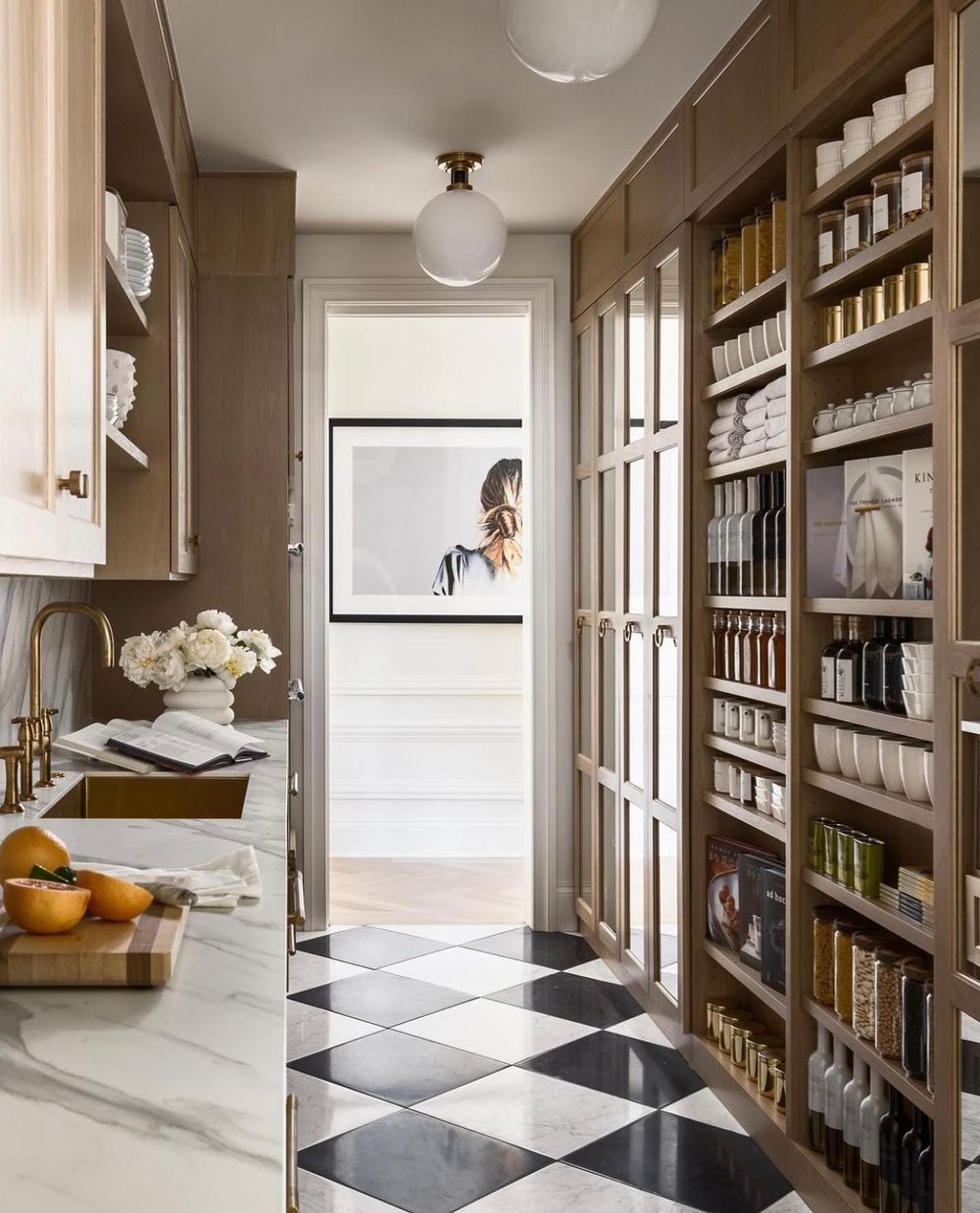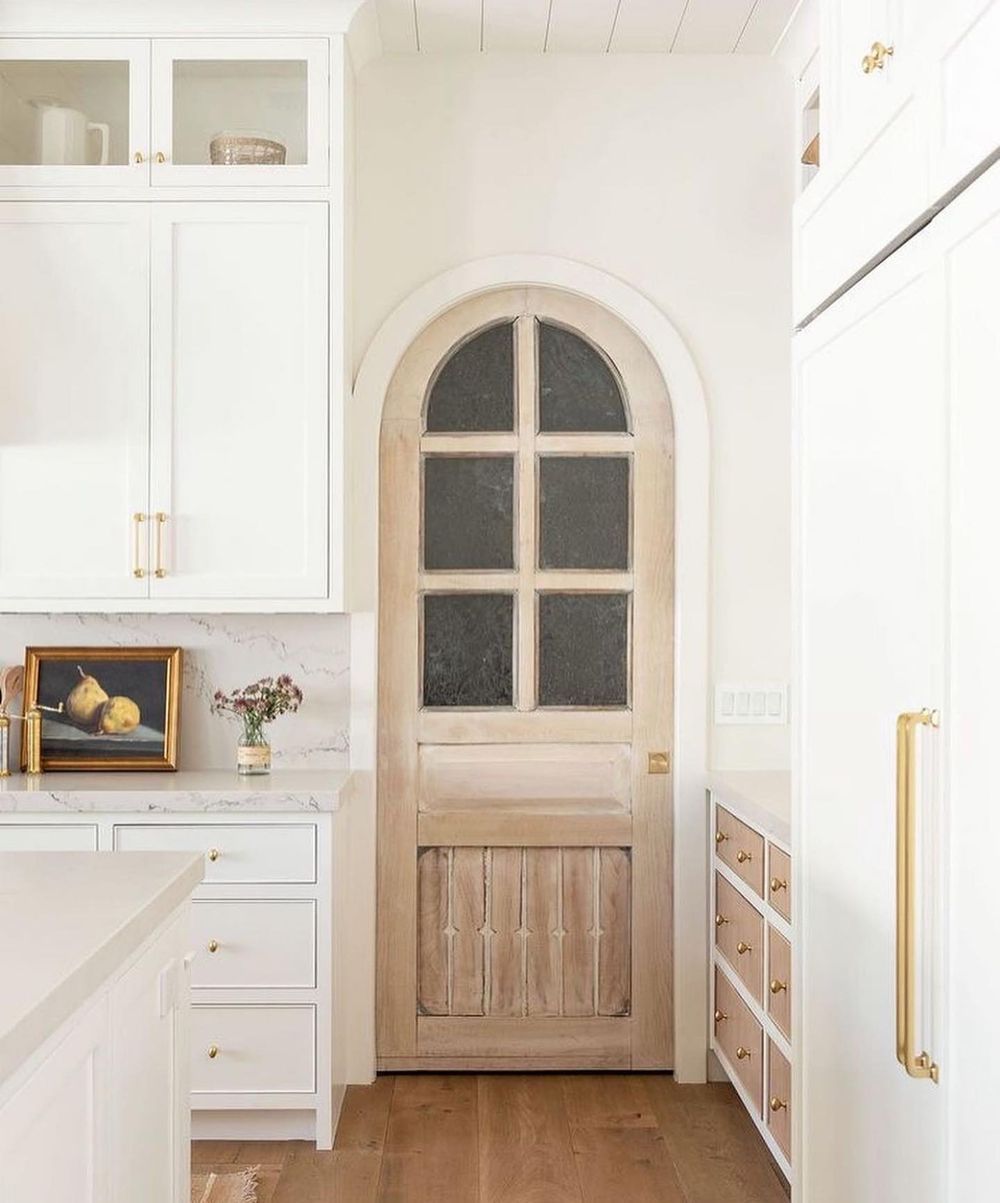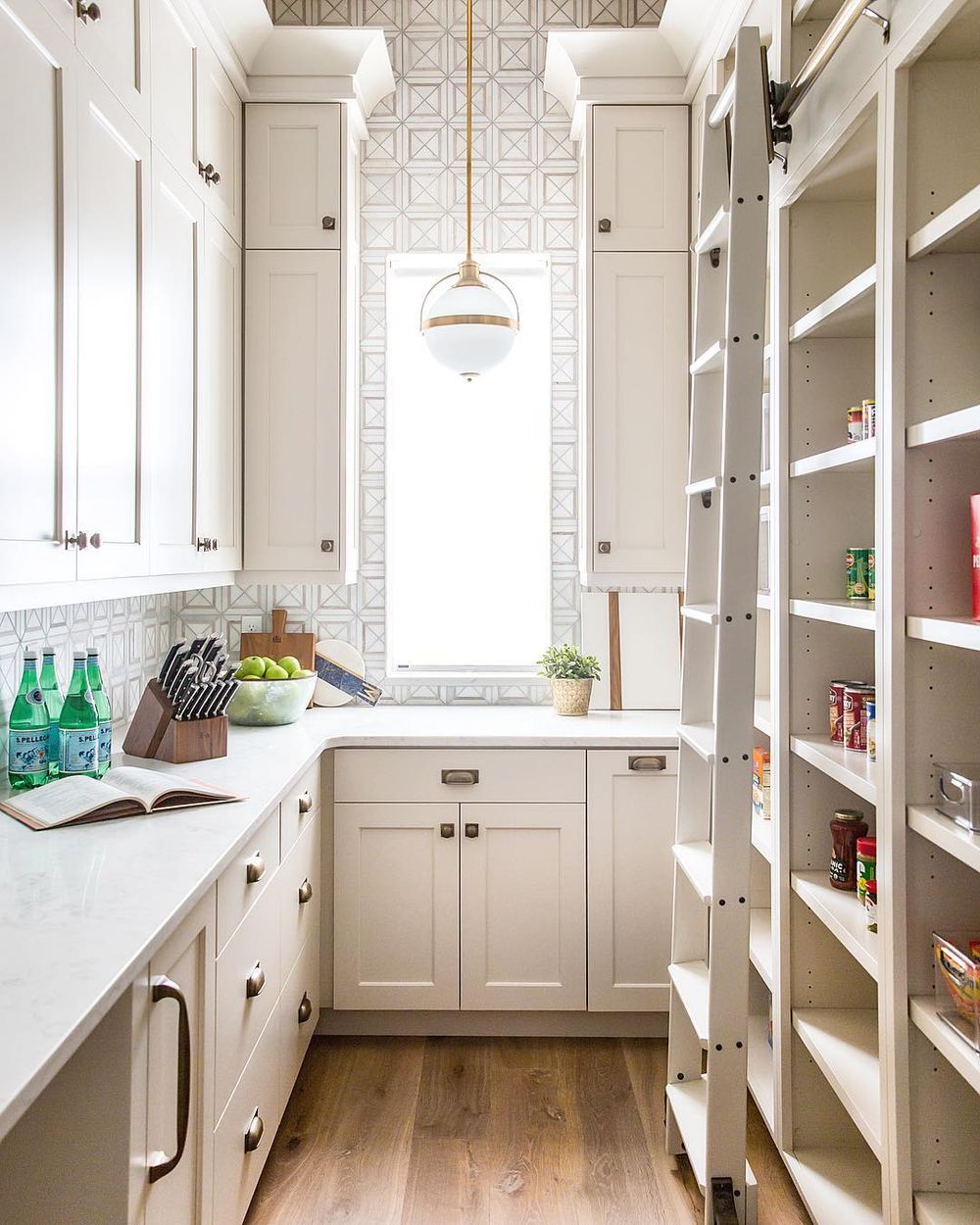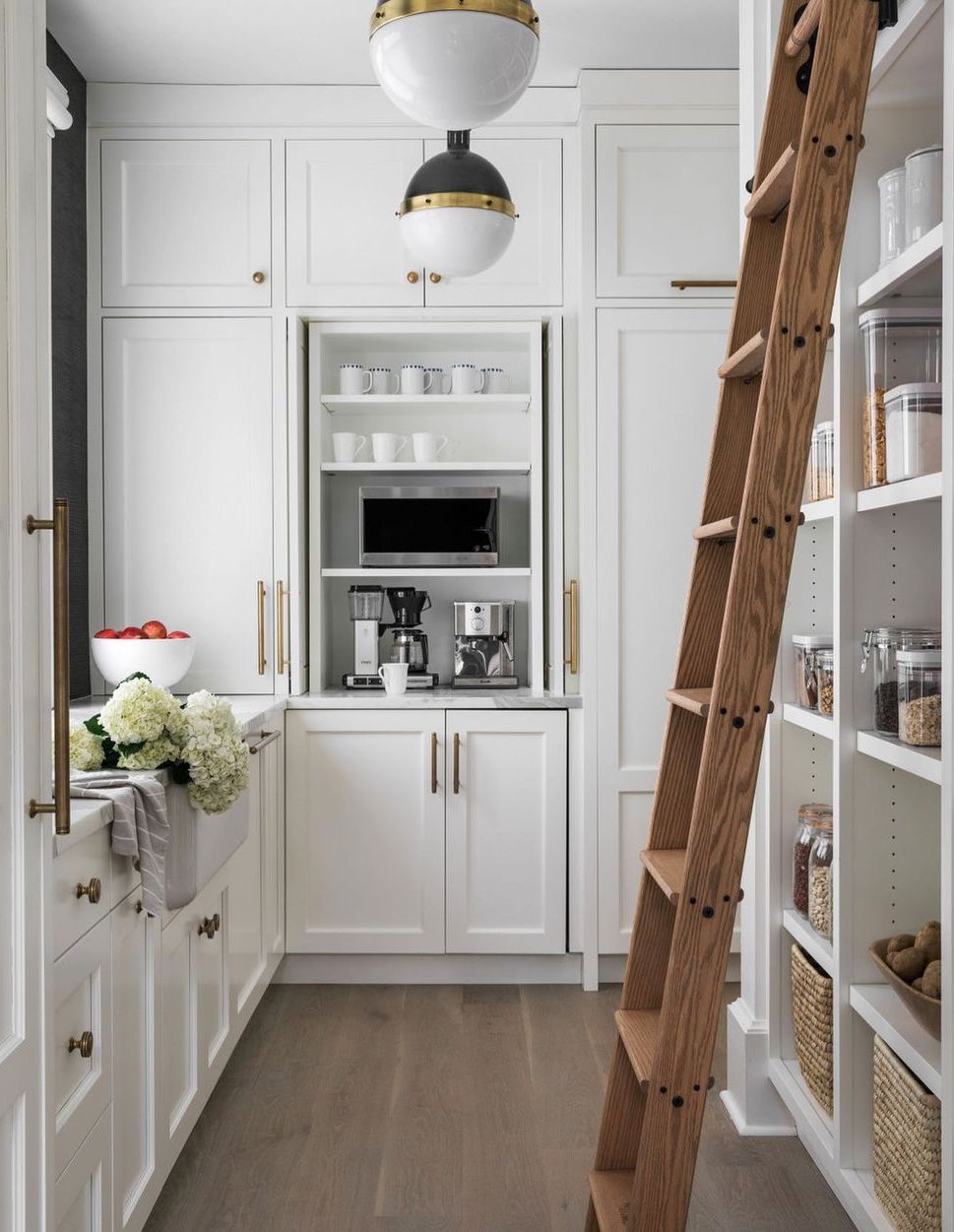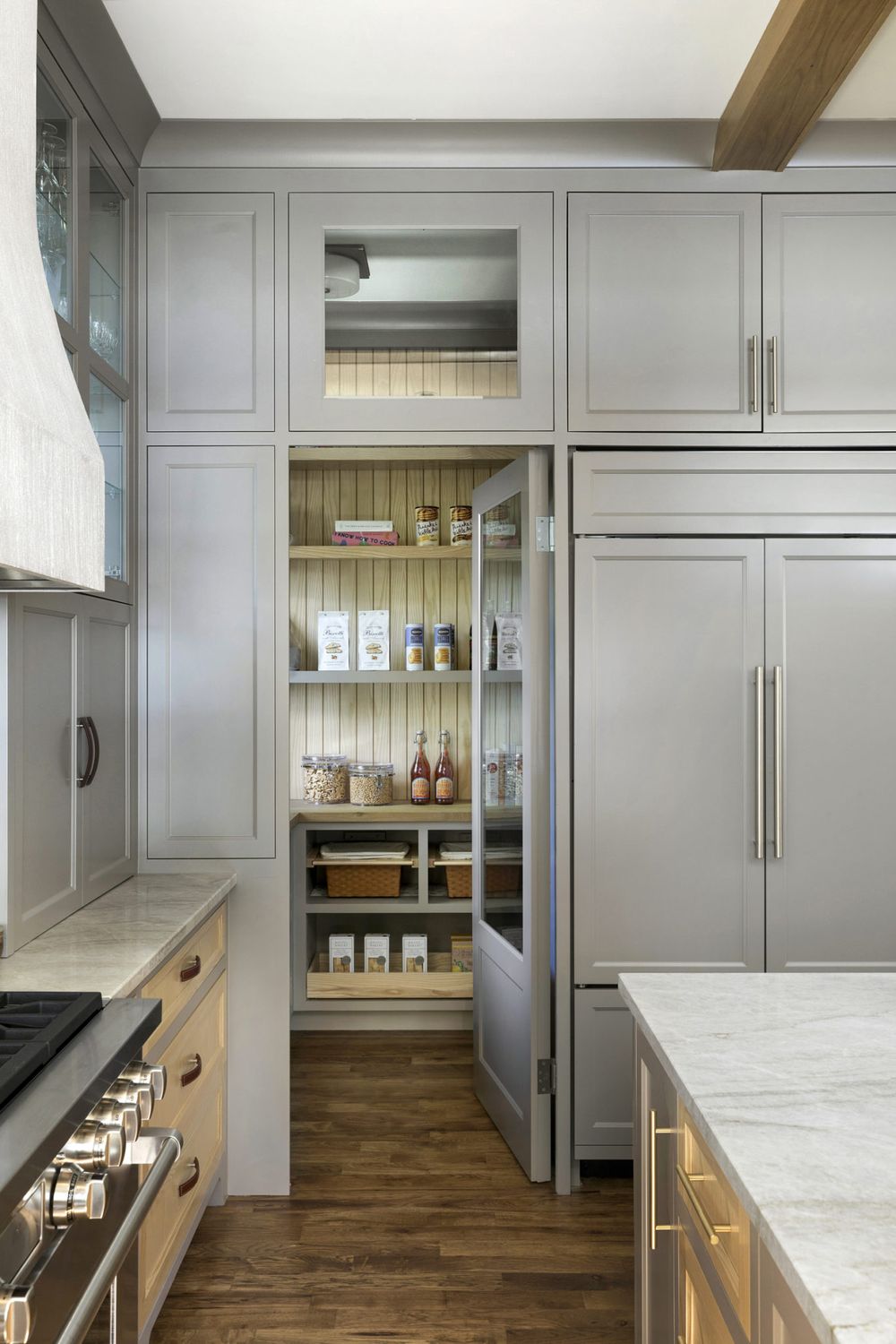Butler’s pantries are a great addition to any kitchen. They can be used for meal prep, hosting dinner parties, and even cocktail parties. But what exactly is a butler’s pantry? And how do you design one that is both functional and stylish? Here’s everything you need to know about designing an amazing butler’s pantry for a residential home.
Difference Between a Kitchen Pantry and Butler’s Pantry
What is the difference between a kitchen pantry and a butler’s pantry? The main difference is where they are found within the home and their purpose.
A butler’s pantry is a small room located between the kitchen and the dining room. Traditionally, butler’s pantries were used to store table linens, silverware, and other items needed for entertaining. Today, butler’s pantries are often used as secondary prep space or as a storage area for dishes and glassware.
Kitchen pantries, on the other hand, are typically located near or within the kitchen and are used to store food, small appliances, and cooking supplies. Kitchen pantries can be either walk-in or reach-in and may be located in a separate room or built into the cabinets. You could also go with a freestanding kitchen pantry cabinet if you are short on space.
While butler’s pantries are not essential for every home, they can be a valuable addition if you entertain frequently or simply want extra storage space!
Types of Butler’s Pantries
For many people, the butler’s pantry is an essential part of the home. This hidden space allows homeowners to keep their best dishes and serving ware hidden away from guests, while still being close at hand when needed. Here are the major types of butler’s pantries found in residential homes.
Walk-in butler’s pantry
Walk-in butler’s pantries are especially convenient, as they provide ample space for storing everything from dinnerware to linens. These pantries are typically located off of the kitchen or dining room, and may even have a second entrance into the home. If you entertain frequently or have a large family, a walk-in butler’s pantry is a great option to consider.
Reach-in butler’s pantry
Reach-in butler’s pantries are smaller in size and are typically located between the kitchen and dining room. These pantries typically have shelves or cabinets on one wall, and may also have a countertop for food prep. If you have a smaller home or entertain less often, a reach-in butler’s pantry may be a better option for you.
Hidden butler’s pantry
Hidden butler’s pantries are becoming increasingly popular in modern homes. These pantries are typically located behind a door or false wall and can be either walk-in or reach-in. Hidden butler’s pantries are a great option if you want to keep your prep area hidden from guests. Hidden butler pantries can be just as effective, provided they are well-organized and kept clean.
No matter what type of butler’s pantry you choose, make sure it meets your needs and fits your lifestyle.
What to Keep in a Butler’s Pantry
A butler’s pantry is a great storage space for all of your entertaining needs. Here are some items you may want to keep in your butler’s pantry.
Meal Essentials
- Dinnerware: Plates, bowls, cups, and silverware.
- Glassware: Wine glasses, Champagne flutes, cocktail glasses.
- Table linens: Tablecloths, napkins, placemats.
- Serving pieces: Platters, serving bowls, gravy boats, cake stands.
- Bar supplies: Cocktail shakers, wine opener, bar tools.
- Cleaning supplies: Dish soap, dish towels, paper towels.
- Storage containers: Tupperware, Ziploc bags, foil wrap.
Appliances
- Wine refrigerator
- Microwave
- Warming drawer
- Coffee Maker
- Ice Maker
- Dishwasher
- Small Sink
- Blender
- Stand Mixer
Organizing a Butler’s Pantry
Once you know what you want to keep in your butler’s pantry, it’s time to start organizing. Here are some tips for organizing a butler’s pantry.
Keep like items together. Store all of your glasses in one area, all of your table linens in another, and all of your serving pieces in another. This will make it easy to find what you need when you need it.
Use clear storage containers. Clear storage containers are great for butler’s pantries because they allow you to see what is inside without having to open them up. This is especially helpful when entertaining, as you can quickly grab what you need without having to search through everything.
Utilize vertical space. Don’t forget about the vertical space in your butler’s pantry. Utilize wall shelves or hanging racks to store items that won’t fit on the floor.
Label everything! Labeling is key in any well-organized space, and a butler’s pantry is no exception. Label storage containers, shelves, and drawers so you always know where everything is.
Is a butler’s pantry worth it?
The answer to this question is ultimately up to you. If you entertain often or have a large family, a butler’s pantry can be a great asset to your home. However, if you don’t entertain often or have a small home, a butler’s pantry may not be worth the investment. Ultimately, it is up to you to decide whether a butler’s pantry is right for your home!
I believe that a butler’s pantry can be a great addition to any home, and with proper planning, it can be an extremely functional and stylish space. Use these tips to help you design the perfect butler’s pantry for your home!
